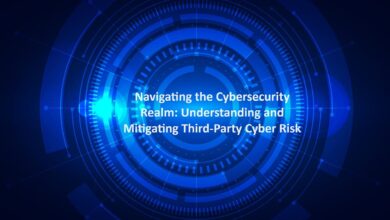Making Sense of Post-Quantum Opportunities for Commerce

The thing about far-away technological innovations is that they get closer to reality each day.
And with the news Tuesday (May 21) that Zoom is making post-quantum end-to-end encryption (E2EE) globally available across its Zoom Workplace platform, specifically Zoom Meetings with Zoom Phone and Zoom Rooms coming soon, preparing for the operational and cybersecurity realities of the upcoming quantum internet is top of mind for forward-thinking organizations.
That’s because quantum computers, once fully realized, could break widely used encryption algorithms such as RSA and ECC (Elliptic Curve Cryptography), which underpin the security of online transactions and communications. This looming threat necessitates the development and adoption of post-quantum encryption techniques.
“With the launch of post-quantum E2EE, we are doubling down on security and providing leading-edge features for users to help protect their data. At Zoom, we continuously adapt as the security threat landscape evolves, with the goal of keeping our users protected,” said Michael Adams, chief information security officer at Zoom, in a statement.
While super-powerful quantum computers capable of undoing both today and yesterday’s cryptography still remain just around the corner from being just around the corner (in other words, perennially 10 years away), a May 15 research paper published in research journal Nature posits that researchers are getting close to building what’s known as a quantum repeater, a key device for the creation of the quantum internet.
The advances mean that preparing for the advent of the quantum era, as Zoom is doing, may not be that far-fetched of an initiative. That’s particularly the case for firms operating in security-critical industries like payments and financial services, where any vulnerability could have outsize consequences.
After all, a recent benchmark experiment suggests quantum-powered applications could be a commercial reality within the next two years.
Read more: Quantum Breakthrough From Microsoft Could Shorten Technology’s Go-to-Market Timeline
A Quantum Shift in Security and Efficiency
The advent of the quantum era could profoundly transform the payments industry, offering unprecedented levels of security and efficiency. However, this technological leap also underscores the urgency for robust post-quantum end-to-end encryption to safeguard sensitive information from bad actors who are already preparing themselves to leverage the innovation’s computing capabilities.
As Michael Jabbara, global head of fraud services at Visa, told PYMNTS last March, bad actors have started to steal and hold onto encrypted data in preparation for quantum computing tools to enter the market and allow them to decrypt the information.
This kind of threat is known as Harvest Now, Decrypt Later (HNDL).
Already, in a move to improve the security of its iMessage app, Apple announced in February that it is upgrading its encryption system to fend off potential quantum computing attacks, while in September, encrypted messaging app Signal boosted its own encryption by adding support for the post-quantum cryptographic PQXDH protocol.
Post-quantum E2EE is designed to withstand the computational prowess of quantum computers. Researchers are exploring various cryptographic approaches, including lattice-based cryptography, hash-based cryptography and multivariate polynomial cryptography, to create secure communication protocols that remain impervious to quantum attacks.
Implementing these new encryption standards could be crucial to ensuring the integrity and confidentiality of financial transactions in a quantum-enabled future.
Read also: Quantum Computing Could Change Everything
Quantum Benefits to Payments and Commerce
The potential benefits of the Quantum Internet for payments and commerce are immense.
Enhanced security could reduce the incidence of fraud and cyberattacks, fostering greater consumer trust and enabling the development of new financial products and services. Additionally, the increased computational power of quantum systems could drive innovations in areas such as algorithmic trading, risk management and personalized financial planning.
“The physical world is defined by quantum mechanics,” Chris Hume, senior director of business operations for AI-quantum computing firm SandboxAQ, told PYMNTS in February. “The more effectively we can understand those interactions and then model those interactions, the more efficiently and effectively you can build predictive models.”
This almost unimaginable degree of predictive capability could streamline complex financial processes, from real-time fraud detection to instantaneous cross-border payments.
In the realm of commerce, the Quantum internet could facilitate the creation of unhackable communication networks. Quantum Key Distribution (QKD), a cryptographic protocol that uses quantum mechanics, ensures that any attempt at eavesdropping on the transmitted data disrupts the quantum state, alerting the parties involved. This method could render traditional hacking techniques obsolete, protecting payment systems and customer data from cyber threats.
Still, transitioning to a quantum-secure infrastructure will present numerous challenges on the road ahead. The current global financial system relies heavily on established cryptographic methods, and migrating to post-quantum solutions will require substantial investment in the technology and talent necessary to modernize core infrastructures.
But by preparing today for the quantum future, businesses can ensure they remain secure and competitive in the rapidly evolving digital economy.



